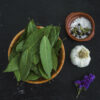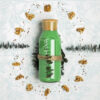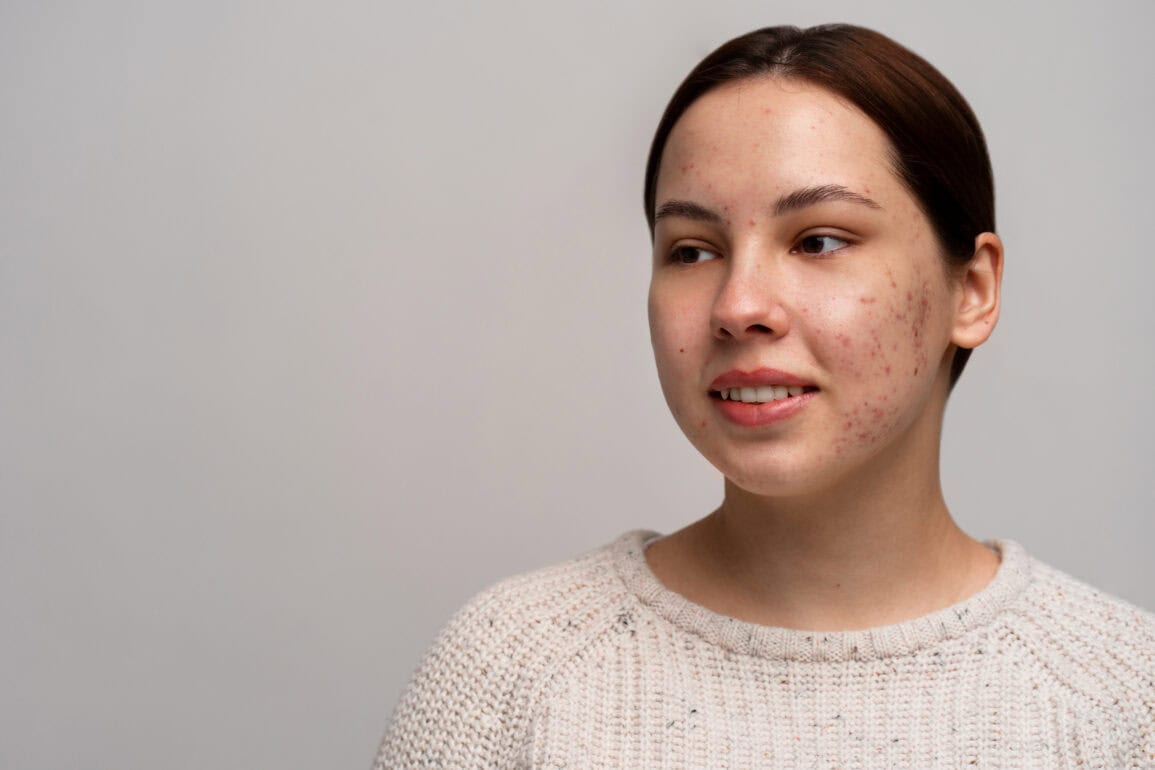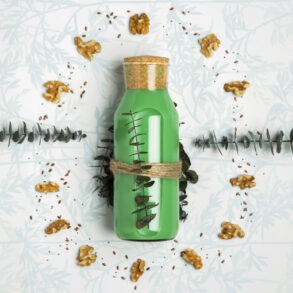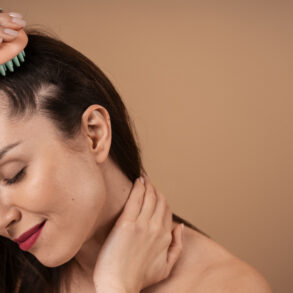Introduction to Rosacea
What is Rosacea?
Rosacea is a chronic skin condition that primarily affects the face, characterized by persistent redness, visible blood vessels, and, in some cases, acne-like breakouts. It’s more than just blushing—it’s a long-term, often progressive disorder that can cause physical discomfort and emotional distress. People with rosacea may also experience burning or stinging sensations, especially when using certain skincare products or after sun exposure.
What makes rosacea particularly tricky is its cyclical nature. Flare-ups might last weeks to months, followed by periods of remission. There’s no known cure, but effective treatments can control and reduce the symptoms.
Interestingly, rosacea is sometimes referred to as the “great pretender” because its symptoms overlap with other skin conditions like acne or eczema, making accurate diagnosis essential.
Who is Most Likely to Develop Rosacea?
Rosacea is most common in adults between the ages of 30 and 50. It’s more frequently diagnosed in women, though men tend to develop more severe symptoms, particularly thickening of the skin on the nose (a condition called rhinophyma).
Caucasians with fair skin—especially those of Northern or Eastern European descent—are particularly prone, but rosacea affects people of all skin tones. Unfortunately, it’s often underdiagnosed in individuals with darker skin due to lack of visible redness and cultural biases in medical research.
Family history also plays a significant role. If a close relative has rosacea, your chances of developing it are significantly higher.
Why Understanding Rosacea Matters
Understanding rosacea is crucial not just for those diagnosed with the condition, but also for healthcare providers, friends, and family. Early detection and management can greatly improve quality of life. Left untreated, rosacea can lead to permanent skin damage, severe eye complications, or significant emotional stress.
Awareness also helps combat social stigma. People living with rosacea are often mistaken as being sunburnt, embarrassed, or even intoxicated. Educating others reduces these harmful misconceptions and promotes empathy.
Causes and Triggers of Rosacea
Genetic Factors
Rosacea tends to run in families, indicating a strong genetic link. Specific gene mutations associated with inflammatory responses and vascular function may make certain individuals more susceptible.
If your parents or siblings have rosacea, you’re more likely to develop it too. Genetics may also determine the severity and progression of the disease, as well as how well you respond to treatments.
Environmental and Lifestyle Triggers
One of the most complex aspects of rosacea is its multitude of triggers. Environmental factors such as sun exposure, wind, hot or cold weather, and humidity can all provoke flare-ups. Lifestyle habits also matter. Spicy foods, alcohol, caffeine, and stress are well-known culprits.
Here’s where keeping a symptom diary can be a game changer. Identifying personal triggers allows for better control over flare-ups, even before starting medication.
Immune System and Microbial Involvement
Recent studies suggest rosacea may be linked to an overactive immune system. For example, higher levels of cathelicidins (proteins involved in immune defense) have been found in rosacea patients, causing inflammation and abnormal blood vessel growth.
Moreover, microorganisms like Demodex mites—tiny skin parasites—and Helicobacter pylori bacteria (common in the gut) are also suspected contributors. These microbes may trigger immune responses that worsen symptoms.
Table: Common Rosacea Triggers and Their Impact
| Trigger | Effect | Risk Level |
|---|---|---|
| Sun exposure | Flushing, redness | High |
| Spicy foods | Increased inflammation | Moderate |
| Alcohol (especially red wine) | Vasodilation and flare-ups | High |
| Hot beverages | Temporary flushing | Low |
| Emotional stress | Hormonal reaction, redness | High |
| Wind or cold weather | Skin irritation | Moderate |
| Skincare products with alcohol | Stinging, burning | High |
Types of Rosacea
Erythematotelangiectatic Rosacea
This type presents as persistent redness in the central part of the face, along with visible blood vessels (telangiectasia). Skin may also feel swollen or sensitive. It’s the most commonly recognized form and often the earliest stage of rosacea.
Management usually involves topical treatments to reduce redness and laser therapy to diminish visible veins.
Papulopustular Rosacea
Often mistaken for acne, this subtype includes red, swollen bumps and pus-filled pimples. It’s more inflammatory in nature and can also include burning or stinging sensations.
Oral antibiotics and topical anti-inflammatory agents are commonly prescribed here. Lifestyle adjustments are essential to prevent worsening.
Phymatous Rosacea
This rare and severe type involves thickening of the skin, particularly on the nose (rhinophyma). It’s more common in men and develops slowly over time. Skin may appear bumpy and oily, and pores become more noticeable.
Surgical options and laser therapy are often required, as topical and oral medications have limited effect at this stage.
Ocular Rosacea
Rosacea doesn’t just affect the skin—it can impact your eyes too. Symptoms include dryness, irritation, redness, and swelling of the eyelids. In serious cases, vision may be threatened.
Treatment involves a combination of eye drops, oral antibiotics, and careful eyelid hygiene. Ophthalmologic evaluation is highly recommended.
Table: Comparison of Rosacea Types
| Type | Primary Symptoms | Affected Area | Typical Treatment |
|---|---|---|---|
| Erythematotelangiectatic | Redness, visible vessels | Central face | Topicals, laser therapy |
| Papulopustular | Red bumps, acne-like pustules | Nose, cheeks, chin | Oral & topical antibiotics |
| Phymatous | Thickened, bumpy skin | Nose, chin, forehead | Surgery, laser |
| Ocular | Red, dry, irritated eyes | Eyes and eyelids | Eye drops, antibiotics |
Symptoms and Diagnosis
Recognizing Early Signs
The earliest signs of rosacea often mimic harmless skin irritation—facial redness that comes and goes, slight burning or stinging sensations, and sensitivity to skincare products. But don’t be fooled by their subtlety; early detection is key to effective treatment.
The condition usually starts on the cheeks and nose, gradually spreading to the forehead, chin, and sometimes even the neck and chest. For many people, the redness becomes more persistent over time and doesn’t fade like a typical flush.
Besides redness, some people might notice their skin becomes rough or starts developing broken capillaries. These signs are often overlooked or mistaken for sun damage or sensitivity, delaying proper diagnosis.
Advanced Symptoms to Watch Out For
If untreated, rosacea can progress to more severe symptoms:
- Thickened skin: Especially around the nose, known as rhinophyma.
- Pustules: Acne-like bumps that may be painful.
- Eye issues: Red, itchy eyes and inflamed eyelids.
- Persistent facial swelling: Especially in advanced subtypes.
The psychological toll can be just as serious. Chronic redness and skin disfigurement often lead to anxiety, embarrassment, and social withdrawal.
It’s important to understand that symptoms can vary widely between individuals. Some may experience only mild redness, while others face debilitating discomfort and emotional distress.
How Doctors Diagnose Rosacea
Rosacea doesn’t have a specific diagnostic test. Instead, dermatologists rely on a physical exam and a detailed medical history. They may ask about:
- The frequency and duration of facial redness
- Triggers that worsen your symptoms
- Any eye-related discomfort
- Family history of rosacea or other skin conditions
Sometimes, a skin biopsy may be performed to rule out other conditions like lupus, eczema, or seborrheic dermatitis.
Accurate diagnosis is crucial because rosacea can easily be mistaken for acne, allergic reactions, or skin infections. Misdiagnosis can delay effective treatment, allowing the condition to worsen.
Treatment Options for Rosacea
Topical Medications
Topical medications are often the first line of defense for rosacea. They work by reducing inflammation, redness, and acne-like breakouts.
Common topical treatments include:
- Metronidazole: An anti-inflammatory and antimicrobial cream or gel.
- Azelaic acid: Reduces swelling and redness while exfoliating the skin.
- Ivermectin: Targets the Demodex mites thought to be linked to rosacea.
- Brimonidine and oxymetazoline: Vasoconstrictors that reduce facial redness.
These treatments are usually applied once or twice daily, and while they don’t cure rosacea, they help manage symptoms and reduce flare-ups significantly.
Oral Medications
In more moderate to severe cases, dermatologists may prescribe oral medications:
- Antibiotics like doxycycline and tetracycline help control inflammation.
- Isotretinoin (for very severe cases) reduces oil production and inflammation but has significant side effects.
Oral medications are often combined with topicals for faster results, especially in those with papulopustular rosacea. However, they should be used under close medical supervision, particularly long-term.
Laser and Light-Based Therapies
Laser therapy is a popular and effective option for treating visible blood vessels and chronic redness. Common types include:
- Pulsed dye laser (PDL)
- Intense pulsed light (IPL)
- Nd:YAG laser
These treatments work by targeting and collapsing the small blood vessels causing the redness. While expensive, they can dramatically improve the appearance of the skin after a few sessions.
Side effects are minimal, with some temporary redness or swelling. Laser treatments are especially beneficial for people who haven’t responded well to medication.
Table: Rosacea Treatment Comparison Chart
| Treatment Type | Effectiveness | Side Effects | Cost | Best For |
|---|---|---|---|---|
| Topical Medications | Moderate | Skin irritation, dryness | Low to moderate | Mild to moderate rosacea |
| Oral Antibiotics | High | GI issues, sun sensitivity | Moderate | Moderate to severe flare-ups |
| Isotretinoin | Very high | Severe side effects | High | Severe, treatment-resistant cases |
| Laser Therapy | High | Redness, swelling | Very high | Visible vessels, persistent redness |
| Natural Remedies | Variable | Minimal | Low | Complementary approach |
Natural and Home Remedies for Rosacea
Lifestyle Modifications
Lifestyle changes can make a world of difference in managing rosacea. Start by identifying and avoiding your personal triggers. This might involve:
- Using sunscreen daily
- Reducing alcohol and spicy foods
- Managing stress through yoga, meditation, or journaling
- Avoiding hot showers or saunas
Incorporating a cooler, calmer routine can significantly reduce flare-ups and help medications work more effectively.
Diet and Nutrition Tips
Some foods and beverages are known to aggravate rosacea. A rosacea-friendly diet focuses on anti-inflammatory ingredients:
Foods to include:
- Leafy greens and berries (rich in antioxidants)
- Omega-3s from salmon and flaxseeds
- Whole grains and lean proteins
Foods to avoid:
- Spicy dishes
- Hot beverages
- Alcohol (especially red wine)
- Processed foods high in sugar or salt
Hydration also plays a major role. Drink plenty of water throughout the day to keep skin hydrated and healthy.
Herbal and Natural Treatments
Natural remedies offer gentle support for sensitive, rosacea-prone skin. While not a replacement for medical treatments, they can be useful additions:
- Green tea extract: Anti-inflammatory and soothing.
- Chamomile: Calms redness and irritation.
- Aloe vera: Moisturizes without clogging pores.
Always patch-test natural products before applying them to your entire face, especially if your skin is reactive.
Table: Natural Remedies vs. Medical Treatments – Pros and Cons
| Remedy Type | Advantages | Disadvantages |
|---|---|---|
| Green tea extract | Natural anti-inflammatory, antioxidant-rich | Effects may be mild or slow |
| Chamomile tea compress | Reduces redness and irritation | Potential for allergic reaction |
| Aloe vera gel | Soothes and hydrates sensitive skin | May not address deep inflammation |
| Prescription creams | Clinically tested, targeted | Potential side effects and irritation |
| Oral antibiotics | Fast, effective for severe cases | GI upset, antibiotic resistance risk |
Skincare for Rosacea-Prone Skin
Gentle Skincare Routine
The cornerstone of rosacea management is a gentle, consistent skincare routine. Rosacea-prone skin is hyper-sensitive, meaning anything from a change in temperature to a harsh face wash can lead to a flare-up.
Key steps for a soothing routine:
- Cleanse: Use a sulfate-free, fragrance-free cleanser. Avoid using hot water—lukewarm is best.
- Moisturize: Pick a non-comedogenic, alcohol-free moisturizer with calming ingredients like ceramides or niacinamide.
- Protect: Daily sunscreen is non-negotiable. Mineral sunscreens (zinc oxide or titanium dioxide) are less irritating than chemical ones.
- Avoid Over-Exfoliation: Skip physical scrubs and use gentle chemical exfoliants only if your dermatologist approves.
Stick to products with short ingredient lists and always patch test new items.
Recommended Ingredients and Products
Not all skincare ingredients are created equal, especially when you’re dealing with rosacea. Some can soothe inflammation, while others can set your skin on fire—literally.
Top recommended ingredients:
- Niacinamide: Reduces inflammation and strengthens the skin barrier.
- Azelaic acid: Anti-inflammatory and anti-bacterial.
- Ceramides: Restore the protective barrier.
- Hyaluronic acid: Provides hydration without clogging pores.
- Allantoin and panthenol: Calm and repair damaged skin.
Product picks may include:
- CeraVe Hydrating Facial Cleanser
- Vanicream Moisturizing Lotion
- La Roche-Posay Toleriane Double Repair Moisturizer
- EltaMD UV Clear Broad-Spectrum SPF 46
Ingredients to Avoid
Steering clear of irritating ingredients is just as important as choosing the right ones. Avoid:
- Fragrance: The #1 irritant for sensitive skin.
- Alcohol-based products: Extremely drying and irritating.
- Menthol, eucalyptus, or peppermint oil: Cooling but harsh on rosacea skin.
- Exfoliating beads or scrubs: These can cause micro-tears and exacerbate redness.
Less is often more. Stick to basic, gentle formulas and avoid chasing viral skincare trends that could do more harm than good.
Table: Skincare Do’s and Don’ts for Rosacea
| Do’s | Don’ts |
|---|---|
| Use fragrance-free cleansers | Use alcohol-based toners or astringents |
| Apply mineral sunscreen daily | Skip sunscreen or use chemical versions |
| Moisturize twice daily | Let skin dry out or become flaky |
| Patch-test new products | Try too many new products at once |
| Keep skincare routine simple | Layer too many active ingredients |
Emotional and Psychological Impact of Rosacea
Self-Esteem and Social Anxiety
Rosacea doesn’t just affect your skin—it impacts your confidence and mental well-being. Many sufferers report feeling embarrassed, judged, or socially anxious due to the visible symptoms.
Comments like “Why are you so red?” or “You look sunburned” can be demoralizing. Over time, these seemingly small remarks can cause people to withdraw from social events or avoid being photographed.
The chronic, visible nature of rosacea makes it different from other conditions. Even on “good” days, there’s often a lingering fear of a flare-up that keeps people on edge.
Coping Strategies
Living with rosacea means learning to manage both the physical and emotional symptoms. Some helpful strategies include:
- Therapy: Cognitive Behavioral Therapy (CBT) can help address social anxiety and depression.
- Support groups: Sharing your experience with others who understand is incredibly validating.
- Positive affirmations: Reframing your internal dialogue can build resilience.
- Skin positivity: Following skin-positive influencers and advocates can shift your perspective.
Even simple actions—like explaining your condition to friends—can foster understanding and reduce awkwardness.
Importance of Support Groups and Therapy
There are several online communities where rosacea patients share tips, product reviews, and emotional support. Forums like Reddit’s Rosacea board or Facebook support groups are active and welcoming spaces.
Professional therapy can also be a lifeline, particularly if rosacea is affecting your relationships or career. Therapists familiar with chronic illness or dermatological conditions can provide specialized tools to help you cope.
Remember: Rosacea is a medical condition, not a character flaw.
Preventive Measures
Sun Protection and Weather Management
Sun exposure is the number one external trigger for rosacea flare-ups. Even short periods in the sun can lead to redness or bumps.
Prevention tips:
- Apply a broad-spectrum SPF 30+ daily, even on cloudy days.
- Wear a wide-brimmed hat and sunglasses outdoors.
- Use a UV umbrella or seek shade during peak sunlight hours (10 AM – 2 PM).
- In cold weather, use a scarf to protect your face from the wind.
Weather management also includes using a humidifier indoors to prevent dry air and avoiding sudden temperature changes when possible.
Avoiding Triggers and Flare-Ups
Keeping a rosacea diary is a smart way to identify what sets off your symptoms. Common triggers include:
- Certain foods (spicy dishes, dairy, alcohol)
- Emotional stress
- Overexertion or intense exercise
- Harsh skincare products
Avoiding these triggers doesn’t mean eliminating them entirely. Sometimes, small adjustments—like letting coffee cool before drinking—can help.
Importance of Routine Dermatological Care
Regular visits to a dermatologist are essential for managing rosacea. They can:
- Track progression of your symptoms
- Adjust treatment as needed
- Provide access to the latest therapies
- Help with early detection of complications, especially ocular symptoms
Don’t self-diagnose or experiment with treatments without medical guidance—rosacea is complex and varies widely from person to person.
Living with Rosacea: Real Stories and Long-Term Outlook
Managing Daily Life
Living with rosacea requires a mix of vigilance, patience, and adaptability. While there is no one-size-fits-all solution, individuals can build a lifestyle that minimizes flare-ups and supports overall skin health.
Daily life management includes:
- Morning and evening skincare routines tailored to rosacea
- Trigger tracking, especially for foods, weather, and emotions
- Stress-reduction techniques, like journaling or light yoga
- Adapting exercise routines to prevent overheating, such as working out in cooler environments or breaking up intense sessions
You might even find yourself keeping an “emergency kit” with soothing mists, SPF, and anti-redness creams when on the go. The more proactive you are, the easier it becomes to control the condition.
Success Stories
Many people with rosacea find a groove after the initial diagnosis. For example, someone might discover that avoiding dairy and switching to fragrance-free skincare completely changes their flare-up frequency. Others may experience major relief after a few laser therapy sessions.
Real stories highlight how impactful personalized treatment can be:
- Emma, 34: Switched from drugstore products to dermatologist-approved ones and saw a 70% improvement in redness.
- Raj, 42: Discovered that managing his diet (eliminating processed sugars) drastically reduced his papules and pustules.
- Linda, 50: Joined a support group and, through shared experiences, learned about IPL treatment that changed her life.
These stories offer hope: rosacea doesn’t have to control your life.
Long-Term Prognosis and Skin Health
With proper management, many individuals can keep rosacea under control long-term. However, it’s crucial to understand that flare-ups may still occur due to unavoidable factors like stress or illness.
Prognosis varies:
- Early-stage rosacea can often be managed with topicals and lifestyle adjustments.
- Moderate to severe rosacea might require consistent dermatologist visits and a combination of treatments.
- Ocular or phymatous rosacea need specialized intervention but can be stabilized.
The key is consistency and patience—rosacea is a marathon, not a sprint.
The Science Behind Rosacea
Role of Inflammation
At its core, rosacea is a chronic inflammatory condition. This inflammation is triggered by external factors but also stems from internal immune responses that are hyperactive or poorly regulated.
Key players in inflammation:
- Cathelicidins: These peptides are overproduced in rosacea, leading to skin damage.
- Toll-like receptors: These immune sensors may be overactive, leading to exaggerated responses to microbes and heat.
This helps explain why anti-inflammatory treatments, both topical and oral, are often effective in reducing symptoms.
Impact of Skin Barrier Dysfunction
The skin barrier in rosacea patients is usually compromised. This makes the skin more susceptible to irritants, allergens, and temperature changes.
A damaged skin barrier means:
- More water loss
- Easier entry for bacteria and irritants
- Heightened sensitivity
Restoring the skin barrier through moisturizers rich in ceramides and avoiding harsh products is crucial to calming the skin.
Latest Research Developments
Rosacea research has expanded significantly over the past decade. New studies focus on:
- Genetic markers for better diagnosis and treatment predictions
- Microbiome imbalance, particularly the role of Demodex mites and bacterial flora
- Targeted therapies, including biologics and probiotics
Promising research aims to develop more personalized treatments that go beyond symptom control and address root causes.
Table: Scientific Theories and Supporting Evidence
| Scientific Theory | Explanation | Evidence Level |
|---|---|---|
| Inflammatory peptide overexpression | Cathelicidin overproduction causes redness | Strong clinical studies |
| Microbial involvement | Demodex mites trigger immune response | Moderate observational |
| Genetic predisposition | Family history increases susceptibility | High genetic correlation |
| Skin barrier dysfunction | Weak barriers allow irritant entry | Dermatological consensus |
| Neurovascular dysregulation | Nerve signals overreact to stimuli | Emerging research |
Rosacea in Different Skin Types and Ethnicities
Challenges in Diagnosis for Darker Skin Tones
Rosacea is often underdiagnosed or misdiagnosed in individuals with darker skin tones because the characteristic redness may not be as visible. Instead, patients may report burning, itching, or breakouts that are mistaken for acne or eczema.
Physicians must look beyond visual cues and listen closely to symptom descriptions. This gap in recognition often leads to delayed treatment.
Cultural Misunderstandings and Awareness
In some cultures, facial redness may be interpreted as embarrassment, high blood pressure, or even shame. These misinterpretations can discourage individuals from seeking help or recognizing the medical nature of their condition.
Awareness campaigns and inclusive skincare education are crucial to bridging this gap and empowering all patients to seek the help they need.
Tailored Treatment Approaches
Skin of color has different structural and physiological needs. For example:
- Laser settings need to be adjusted to prevent hyperpigmentation.
- Gentler topicals are recommended to avoid causing light or dark patches.
- Moisturizing regimens are essential, as darker skin can show uneven tone more prominently when irritated.
Customized care plans lead to better outcomes across diverse patient populations.
Table: Rosacea Presentation by Skin Tone
| Skin Tone | Common Signs | Challenges | Tips for Management |
|---|---|---|---|
| Fair Skin | Redness, visible capillaries | Easily diagnosed | Use anti-redness skincare |
| Medium Skin | Redness and bumps | Sometimes mistaken for acne | Include barrier repair products |
| Dark Skin | Bumps, burning, dryness | Redness not always visible | Focus on hydration and barrier repair |
Pros and Cons of Various Rosacea Treatments
Prescription Medications
Advantages:
- Clinically proven effectiveness
- Targets inflammation and bacteria
- Easy to integrate into daily routines
Disadvantages:
- Potential side effects (dryness, irritation)
- May take weeks to see results
- Expensive without insurance
Laser Therapy
Advantages:
- Long-lasting cosmetic results
- Treats visible vessels effectively
- Non-invasive with minimal downtime
Disadvantages:
- High cost per session
- Requires trained specialists
- Risk of hyperpigmentation in darker skin
Natural Remedies
Advantages:
- Fewer side effects
- Affordable
- Easily accessible
Disadvantages:
- May not be potent enough alone
- Effects vary between individuals
- Limited scientific backing
Table: Treatment Advantages vs Disadvantages
| Treatment | Advantages | Disadvantages |
|---|---|---|
| Topical Medications | Easy to use, reduces redness and bumps | Irritation, dryness, needs consistency |
| Oral Antibiotics | Rapid symptom relief | GI upset, antibiotic resistance risk |
| Laser Therapy | Treats visible vessels, boosts confidence | Costly, not always covered by insurance |
| Natural Remedies | Gentle, holistic, minimal side effects | Slower results, inconsistent effectiveness |
Rosacea vs. Other Skin Conditions
Differences Between Rosacea and Acne
Although papulopustular rosacea resembles acne, there are key differences:
- No blackheads in rosacea
- Rosacea typically affects adults over 30
- Redness and visible vessels are more common in rosacea
Acne medications like benzoyl peroxide may actually worsen rosacea symptoms, making accurate diagnosis essential.
Rosacea vs. Lupus
Lupus, an autoimmune disease, can also cause facial redness in a butterfly pattern. However, lupus usually includes systemic symptoms like joint pain, fatigue, and hair loss.
Blood tests and physical exams help differentiate between the two.
Misdiagnosis Risks
Common misdiagnoses include:
- Eczema
- Perioral dermatitis
- Seborrheic dermatitis
Misdiagnosis leads to ineffective treatments and can worsen rosacea. Always seek a dermatologist’s opinion before starting a new regimen.
Table: Comparison of Common Skin Disorders
| Condition | Primary Symptoms | Key Differences |
|---|---|---|
| Rosacea | Redness, visible vessels, bumps | Triggers-based, persistent redness |
| Acne | Whiteheads, blackheads, cysts | Presence of comedones |
| Lupus | Butterfly rash, fatigue, joint pain | Systemic symptoms, autoimmune |
| Eczema | Dry, flaky, itchy skin | Typically in skin folds |
| Perioral Dermatitis | Rash around mouth, burning sensation | Confined to oral area |
Conclusion
Rosacea is more than just a cosmetic issue—it’s a chronic condition that affects both skin and soul. While there’s no definitive cure, understanding your type, identifying triggers, and sticking to a personalized treatment plan can drastically improve your quality of life. From dermatologist-approved medications to holistic remedies and mindful skincare, options abound. The journey to managing rosacea isn’t always smooth, but with education and support, it becomes entirely manageable.
FAQs
1. Can rosacea go away on its own?
Rosacea is a chronic condition and typically doesn’t go away without treatment. Symptoms may improve with proper care and lifestyle changes.
2. Is rosacea contagious?
No, rosacea is not contagious. It cannot be spread through contact or sharing products.
3. Can makeup worsen rosacea?
Yes, some makeup products contain irritants. Use non-comedogenic, fragrance-free makeup specifically labeled for sensitive or rosacea-prone skin.
4. Are there any supplements that help with rosacea?
Some people find relief with omega-3 fatty acids, probiotics, or vitamin D. Always consult a doctor before starting any supplements.
5. What’s the best sunscreen for rosacea?
Mineral sunscreens with zinc oxide or titanium dioxide are best—they’re less likely to irritate sensitive skin.

